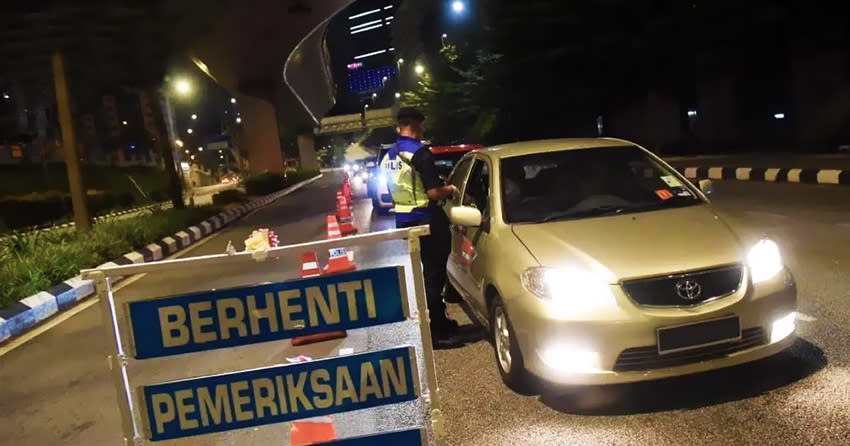Police misconduct must be addressed realistically

Criminologists and other crime and policing experts say the approach of top police management, which solely relies on reported cases of police misconduct to gauge its prevalence, is flawed and misleading.
They claim that by focusing only on reported cases, the true extent of the problem is underestimated, as many instances of police misconduct are unreported, or unknown.
This ‘omission’ undermines the transparency and credibility of the police department’s efforts to address and prevent unethical and criminal behaviour.
Inspector-General of Police, Tan Sri Razarudin Husain, recently said that only a handful of police personnel were involved in criminal activities. He stressed that the public should not be alarmed and can trust the force to conduct transparent investigations into criminal cases involving its personnel.
According to the IGP, only two per cent of the 137,000 personnel in the police force were involved in criminal activities. He attributed the low numbers to the constant monitoring and supervision by their superior officers.
Some may see this as the police trying to downplay the problem, dismissing it as a case of “a few rotten apples”. However, a simple calculation will show that two per cent of the force adds up to 2,740 personnel. Regardless, these figures are again, based only on reported and known cases. In reality, the actual figures may be beyond comprehension.
In 2021, former IGP, Tan Sri Abdul Hamid Bador, said that corruption among senior ranking officers within the police force was prevalent and needed to be addressed urgently.
Last October, Federal Criminal Investigation Department director Datuk Seri Mohd Shuhaily Mohd Zain, voiced out his dissatisfaction to senior police officers in a closed-door meeting, about the issue of corruption and misconduct in the department. That video went viral.
Shuhaily openly criticised police officers who worked alongside syndicates, thereby compromising the safety and lives of their brothers in blue, merely for financial gain and greed.
There are several reasons why police misconduct go unreported. Victims might fear retaliation, or lack trust in the system’s ability to hold officers accountable. Internal mechanisms for reporting misconduct may also be perceived as ineffective, leading to a reluctance to come forward. Additionally, instances of police misconduct would remain unknown if there are no eyewitnesses or evidence to support the claims.
Without considering the unreported and unknown cases, top police management cannot accurately assess the prevalence or severity of misconduct within their departments. This limited viewpoint may result in ineffective measures being implemented to address the problem. It is essential for police management to acknowledge, and actively address the issue of underreporting, ensuring that an accurate picture of misconduct is presented, so that appropriate measure can be taken.
Dark figures in crime refer to the unreported or unknown crimes that take place within democratic civil societies, which means crimes that are not officially recorded or documented. These crimes often occur outside the knowledge of law enforcement agencies and, therefore, do not enter official crime statistics. Police misconduct that are unreported or unknown are also classified by experts as dark figures of crime.
Police misconduct includes various acts of corruption, sexual harassment, extortion, death in police custody, brutality, and other forms of deviance.
The concept of dark figures in crime recognises that official crime data, such as those collected by police or reported by victims, do not capture the full extent of criminal activities, including police misconduct within society. Various factors contribute to the existence of dark figures, including fear of retaliation, distrust in law enforcement, lack of awareness or understanding of criminal victimisation, or even personal motivations for not reporting a crime.
For example, certain crimes like domestic violence or sexual assault often go unreported due to the victims’ concerns about their safety, privacy, or social stigma. Similarly, victims of police misconduct may not report the incidents if they believe that reporting would not yield significant outcomes, or in the worst-case scenario, retaliation from within.
Criminologists attempt to estimate the extent of dark figures in crime through various research methods, including victimisation surveys and self-report studies. These studies involve directly asking individuals about their experiences with crime, even if they did not report them to the police. By comparing such data with official crime statistics, researchers can approximate the hidden or unreported crimes.
Understanding dark figures in crime is crucial in developing effective crime prevention and intervention strategies. Without accounting for these unreported and unknown crimes, policymakers may have an incomplete understanding of the true crime situation within society, and may not allocate resources adequately to address them.
To address this issue, some police departments have started implementing proactive measures to encourage the reporting of misconduct and increase transparency. This includes establishing independent oversight bodies, creating confidential reporting mechanisms, conducting anonymous surveys to gauge public perception, and fostering relationships with community organisations. These efforts aim to create a culture where officers feel comfortable reporting misconduct, and the public feels confident that their concerns will be heard and investigated.
It must be reiterated that top police management should not solely rely on reported cases of police misconduct to understand its prevalence. They must actively consider the unreported and unknown cases to get a more accurate understanding of the problem. By addressing the reasons behind the underreporting, and taking proactive steps towards transparency, the Royal Malaysia Police can work towards preventing and addressing unethical and criminal behaviour within their ranks.
The post Police misconduct must be addressed realistically appeared first on Twentytwo13.


